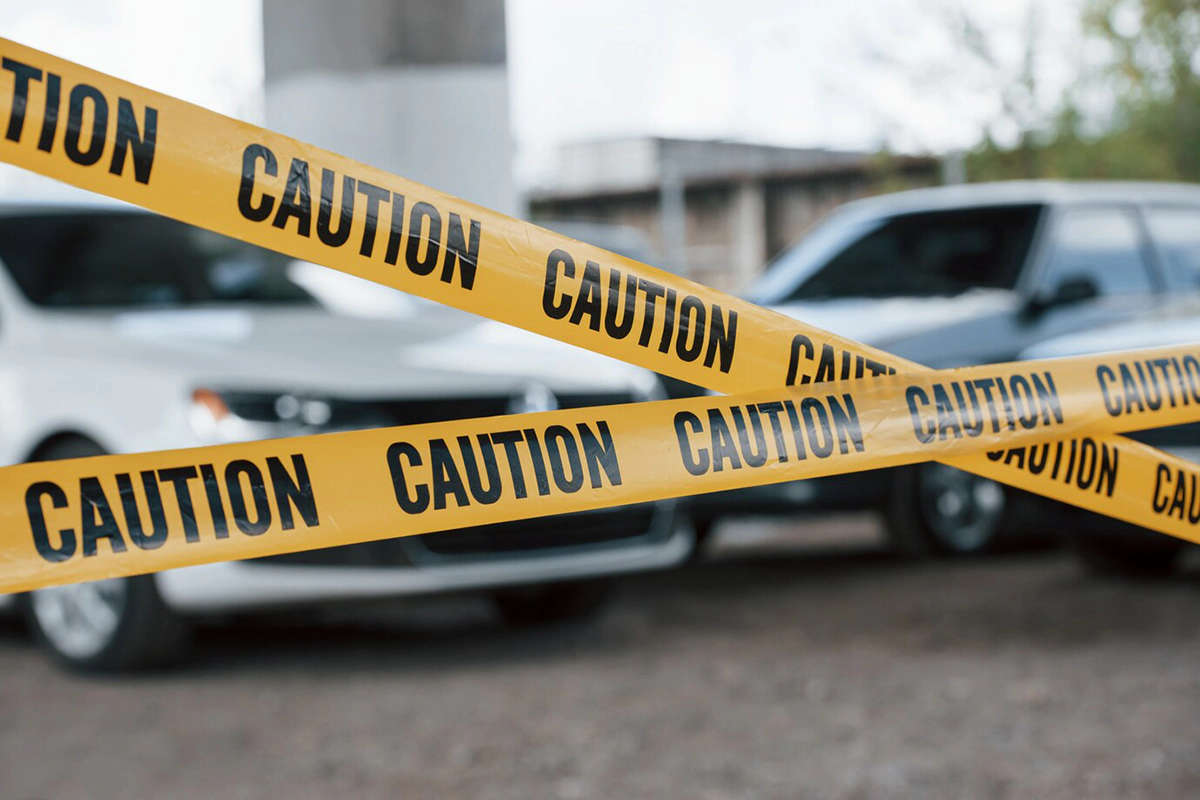In Ontario, navigating the aftermath of a vehicular accident involves more than addressing immediate injuries or damage—it encompasses a complex web of legal obligations that every driver must adhere to. Among these, the requirement to remain at the scene of an accident stands as a critical legal and moral duty, designed to ensure accountability, facilitate emergency assistance, and uphold the integrity of subsequent investigations. However, when an individual decides to leave the scene of an accident, they not only evade their responsibilities but also trigger a series of legal consequences that can profoundly impact their life.
This comprehensive exploration aims to shed light on the charges, penalties, and legal proceedings associated with leaving the scene of an accident in Canada, with a focus on Ontario. By delving into the legal definitions, we will uncover what constitutes leaving the scene, the immediate and long-term consequences of such actions, and the critical role of legal representation in navigating these turbulent waters. Whether you are a driver seeking to understand your obligations or someone facing charges for failing to remain at the scene, this post will provide you with essential insights into the legal landscape, helping you to make informed decisions and prepare for the potential implications of these serious charges.
The importance of this topic cannot be overstated, as the decision to leave the scene of an accident can transform an already stressful situation into a legal ordeal with lasting ramifications. From charges and hefty fines to demerit points and increased insurance premiums, the consequences of failing to fulfill one’s legal duties at the scene of an accident are designed to underscore the seriousness of such actions. Moreover, understanding these potential outcomes is crucial for any driver, as it reinforces the importance of adhering to legal protocols and ensuring the safety and well-being of all parties involved.
As we navigate through the subsequent sections, we will dissect the legal framework surrounding leaving the scene of an accident, examine the investigative and judicial processes that follow, and highlight the importance of legal guidance in these scenarios. Traffic Paralegal Services stands at the ready to assist individuals facing these daunting circumstances.
What Constitutes Leaving the Scene of an Accident?
The Legal Landscape: Is Leaving the Scene of an Accident a Criminal Offence?
Under the Highway Traffic Act, failing to stop at the scene of an accident, commonly referred to as “hit and run,” is indeed an offense. This law mandates that all drivers involved in an accident must remain at the scene to exchange information and assist in any way necessary. The primary goal is to ensure that any parties requiring medical attention receive it promptly and that the accident is properly documented and reported.
Unpacking Consequences if You Leave the Scene of an Accident
Leaving the scene can lead to a variety of legal repercussions, including:
- Charges for leaving the scene of an accident.
- Significant fines.
- Demerit points on your driving record.
- Increased insurance premiums.
- Potential imprisonment.
Each of these consequences varies depending on the severity of the accident and the driver’s actions post-incident.
When a driver decides to leave the scene of an accident, the action sets off a complex chain of investigative procedures by law enforcement agencies aimed at ensuring justice and accountability. This section delves deeper into the intricacies of police investigations, the judicial process for those charged with failing to remain, the impact of aggravating factors on the severity of penalties, the consequences on the driver’s record, and the financial implications of such actions.
Police Investigations
The moment law enforcement is notified of an incident involving a driver who has left the scene, a meticulous investigation is set in motion. This process is multifaceted, involving several steps designed to gather all available evidence that could lead to identifying and locating the offending driver. Officers may canvass the area for surveillance cameras that might have captured the incident on video, offering tangible evidence that can be crucial in identifying the vehicle or the individual involved.
Witnesses play a pivotal role in these investigations. Interviews with bystanders, other drivers, or pedestrians who witnessed the event can provide valuable insights into the circumstances surrounding the accident, including the physical description of the vehicle, its direction of travel post-incident, and the behavior of the driver at the time.
Analyzing physical evidence at the scene is another critical component. This may include skid marks, vehicle debris, and any property damage, which can help reconstruct the event’s sequence and the impact’s severity. Forensic teams might also work to identify paint chips or vehicle parts that can be traced back to the make and model of the car involved.
Trials for Fail to Remain
For individuals charged with failing to remain at the scene, the court process is an exhaustive examination of not just the incident but the actions taken by the accused afterward. Judges consider various factors, including the severity of the accident, any attempts made by the accused to report the incident to the authorities, and their reasons for leaving the scene. The defense might argue mitigating circumstances, but the prosecution will emphasize the legal obligation to remain, assist, and report the incident.
In these cases it is very common for the main issues to be determined is the identity of the driver and whether the prosecution can offer enough credible evidence to satisfy the court of the identity of the individual who failed to remain. Simply saying that this is the vehicle that was involved in an accident, and you are the registered owner of that vehicle is not enough. The prosecution must satisfy the court beyond a reasonable doubt that you were the driver of that vehicle at the time of the accident and that you failed to stop.
Aggravating Factors
Failure to Report an Accident
The law mandates reporting accidents that result in significant property damage or injuries to the authorities promptly. Failing to do so not only exacerbates the situation but also serves as an aggravating factor during sentencing, potentially leading to more severe penalties. This failure is viewed as an attempt to evade responsibility, further compounding the legal repercussions faced by the accused.
Hit & Run
Cases classified as “hit and run,” especially those resulting in bodily harm or fatalities, are treated with the utmost severity under the law. These incidents signify a profound disregard for human life and legal obligations, leading to stringent penalties, including imprisonment. The court takes into account the harm inflicted on victims and the societal impact of such actions, reinforcing the importance of accountability and the consequences of evading it.
Points Against Your Record
The repercussions of leaving the scene extend beyond the immediate legal penalties; they also affect the driver’s record. Accumulating demerit points not only signifies a breach of legal and societal trust but also impacts the individual’s driving privileges. In Ontario, accumulating demerit points can lead to license suspension, and the offense remains on the driver’s record, affecting insurance premiums for years. Insurance companies view such infractions as indicative of high-risk behavior, often resulting in increased rates or the possibility of coverage denial.
Financial Fallout
How Much Will It Cost?
The financial implications of leaving the scene of an accident are both immediate and long-lasting. Initially, the fine imposed can vary widely, reflecting the incident’s severity and the driver’s subsequent actions. In Ontario, fines for failing to remain at the scene can escalate into the thousands, especially when injuries or fatalities are involved. These fines are designed not only as punishment but also as a deterrent against such conduct.
Beyond fines, individuals found guilty may be held financially responsible for the damages incurred during the accident. This can include repair costs for damaged property and medical expenses for injured parties. When insurance companies become involved, the offending driver may face higher premiums or, in some cases, the outright cancellation of their policy, further exacerbating the financial strain.
Legal Help When Facing a Fail to Remain Charge
When faced with charges for leaving the scene of an accident, securing legal representation is crucial. A skilled paralegal specializing in traffic law can provide invaluable assistance in navigating the complex legal system, building a strong defense, and potentially mitigating the charges or penalties faced. They can also offer guidance on the best course of action, whether it’s negotiating a plea or going to trial.
Conclusion
In conclusion, the implications of leaving the scene of an accident in Canada are far-reaching and can affect every aspect of a person’s life, from their legal standing to their financial situation and driving privileges. It’s imperative for drivers to understand their obligations and the severe consequences of failing to remain at the scene. If you find yourself facing such charges, seeking professional legal assistance is your best course of action to ensure your rights are protected and to navigate the complexities of the legal proceedings ahead. Traffic Paralegal Services offers guidance and representation to those charged under the Provincial Offences Act and Highway Traffic Act, ensuring the best possible outcome for your case.









Leave A Comment
You must be logged in to post a comment.